What is unconventional Oil?
You may also hear about oil shales and tar sands (see image below). These are sometimes called unconventional petroleum or unconventional oil, or something similar, and represent opposite ends of a spectrum: oil shales haven’t been cooked enough to make oil yet, and tar sands are the leftovers after cooking and dining.
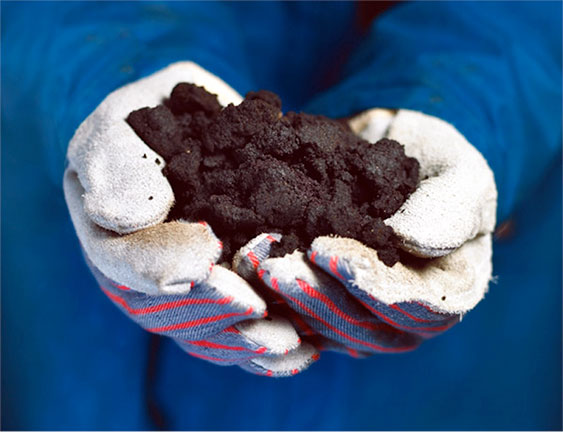
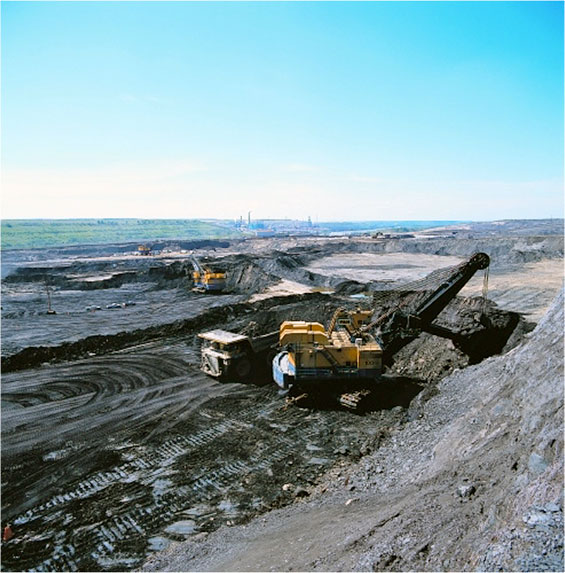
Tar sands, such as the huge deposits of Alberta, Canada (see images above), are like the much smaller tar deposits in the pits at La Brea, mentioned earlier. Oil contains many different types of molecules. When oil seeps to the surface, the smaller ones tend to evaporate, or to be used preferentially by bacteria, leaving the larger molecules behind. These larger ones don’t flow as easily, so the result is a thick, almost solid mass of “tar” (technically called “bitumen”). Native Americans were waterproofing their birch-bark canoes with Alberta’s bitumen when the first Europeans arrived, probably with no knowledge that early peoples of the Fertile Crescent of Mesopotamia also used bitumen to waterproof boats.
Because the bitumen is so “thick” (viscous), normal drill-and-pump techniques don’t work well. Many techniques are in use or being tested to separate oil from the sand or gravel in which it occurs. For shallow deposits, the tar-soaked sands can be surface-mined and then heated or mixed with appropriate chemicals to free the oil from the sand. For deeper deposits, injection of steam or hot air or other hot fluids can warm the bitumen enough that it will flow. Oil companies are even experimenting with setting small fires in wells, to make heat and gases that drive liquid hydrocarbon to other wells. All of these techniques have associated costs, including water and energy use. For now, much more energy is obtained from the oil recovered than is used in recovery, but the ratio is not as good as for “normal” oil, and is likely to get worse as the easier-to-recover tar sands are used up.
In contrast to the tar-sand “leftovers” from normal oil after bacteria have eaten a lot, oil shales are undercooked not-yet-oil. In many places, dead plants and mud accumulated, but without being buried deeply enough to get hot enough to break down the dead plants and make oil. The dead plants have typically been changed enough to get a new name (“kerogen”), but not to make oil that can be pumped out easily. This sort of deposit is called oil shale (Figures 13-15). (The names are NOT the easiest to deal with. Oil pumped out of shale may be called shale oil, but the shale from which that oil is pumped is generally not called oil shale. Instead, that shale is an oil source rock. The name “oil shale” is saved for those shales that haven’t been heated enough to make oil, but that could be in the future. Given our choice, most of us who work in these areas would pick clearer names, but no one asked us!)
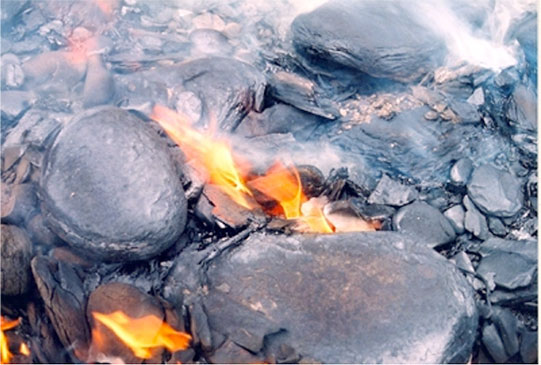
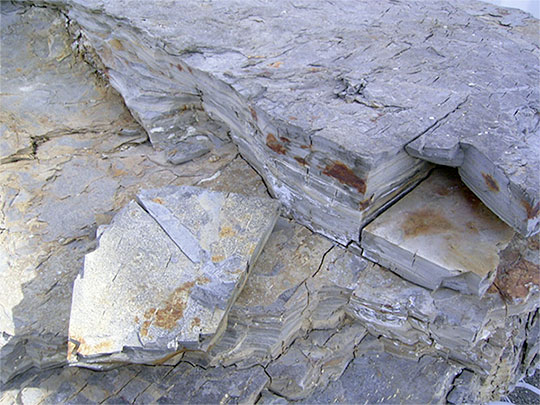
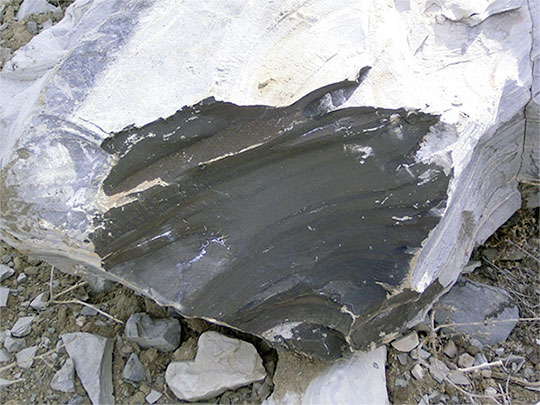
Oil shale can be burned as-is, but the organic matter is diluted by the clay in the shale, so just burning doesn’t work really well. Most plans for future use involve speeding up the natural process, heating the rock to “pyrolyze” the organic matter, releasing oil and gas while leaving some organic material behind in the rock. This may be done in the ground, or after mining the shale. Because energy is needed to heat the rock, costs tend to be higher, and energy recovered lower, than for conventional oil in which the heat of the Earth acting over millions of years did the cooking for us.
